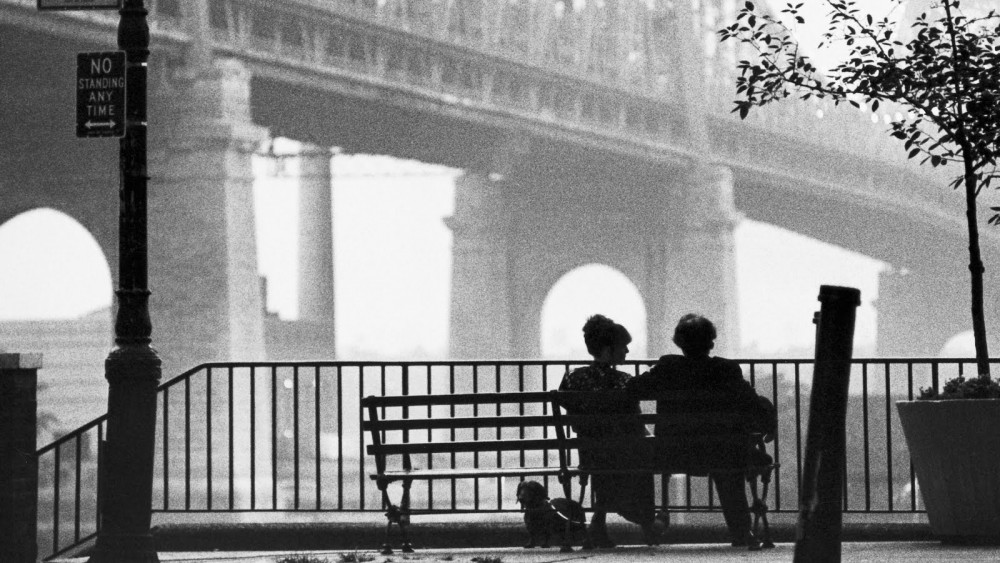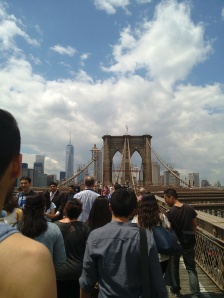The class trip was interesting both to the new media center and walking to film location that we seen in class. The new media was a pretty cool and I liked that they help new startup companies get them setup. Not only that but that there’s opportunity to work with this companies on some of their unique projects. I could surely seeing my self-trying taking advantage of any open opportunity they might have. The walking tour part of the trip was fun because it gave us a chance to see some of the locations we seen in the films in class. You got see it as it is today and were able to see that big change from when it was film to now. I think what made it more great was being able to see that big change in location as time went by from then.

Author Archives: frankestevez
Film Noir: The Naked City


The film noir period was great period for crime dramas and what many of us would consider gangster films. The Naked City was one of the many great crime dramas to be released during this period. The Naked City takes place in New York City during that 1940’s when a mysterious murder death of a woman occurs. I found the way the film was shot unique, since all of it was filmed directly of the streets of New York during the 1940’s and the people that you see around where actual people and not actors. Being filming on the street that being filmed in a studio on a stage worked in its advantage. It allowed you to see the city for what it was adding more to the story and I enjoyed being to see old New York for what it was. It gave the film an authentic feel to it as if the crime that occurred was real and they happen to get it recorded. What I noticed was that the people in the film were very helpful, the scene where the cop was chasing after the suspect people were more than willing to point out where he was headed.
SwingTime
I was stuck much from swingtime as much as I was when watching 42nd street. What struck me the most about 42nd street was the overhead shots. From the other films that that have shown in the class so far haven’t had seen a complicated shot like 42nd street. You the sense that films were becoming more advance in camera shots and wanted to break away from the normal angles that were used. What interest was how was the director able to setup it and what was the inspiration behind it. I know it couldn’t have been easy to set the camera to be able to shot from that angle not only that but having the choreograph in such of a unique way. Today I know the overhead shot is pretty much common.
Applause and Cocoanuts
The silent era was finally gone and talkies were here to stay The Cocoanuts and Applause were two films that proved it. Edison was wrong the American people were enjoying them and there popularity of talkies continue to increase. Both films utilized the sound recording technology that was available at the time and were record in Paramount Astoria studios.
The cocoanuts was originally written by George S.Kaufman and Irving Berlin as a vehicle for the marx brothers. Then later then was adapted to the screen by Morrie Ryskind. Directed by Florey and co-directed by Santley, and was completed within twenty shooting days. Even after a fire that nearly destroyed Astoria’s newly designed sound proof set. When I watched this film I noticed a different to Applause almost a meanly. There was comedic dialog mixed throughout the film with the marx brothers hilarious antics. Even the director himself couldn’t control he’s laughter when recording the brothers that he had to direct from inside the sound box, so that he didn’t mess up the sound recordings. Also noticeable thing about the film was dancing is well choreographed but gave unrealistic portrait of women. The woman in the film mainly the dancers were skinny which sets this idea of how women should look.
Applause is opposite from The cocoanuts which you will see in the opening screen of the film. The dancing was very un-choreographed and the women in the opening scene looked as if they hate what they did but felt very realistic. They were of all shapes and size unlike The cocoanuts and didn’t give this feeling as they were trying to create this idea of a perfect woman. Which makes sense since the film was to show a darker view on life. To hit the viewer’s how dancers of this type of entertainment might have be treated.
Both films might have a different take on being a musical but have their way of filling what they wanted to. The creative of the directors taking new approaches in an experimental ways ended up being the standards for film recording today. Applause might have not been as popular The cocoanuts but it would still be remembered just as much.
The Jazz Singer (Frank Estevez)
The jazz singer was tremendous success after its release, so successful that it continued to be shown three years after. Marking a major turning point into sound pictures. Films before that tried to incorporate sound but failed because the public wasn’t buying into. Edison even felt that the American people did enjoy sound pictures because of the failures with then in the past. The jazz singer however wasn’t completely sound it was a mix between silence and sound.
The story follows Jackie Rabinowitz or Jack Robin as he later goes by in the film played by Al Johnson. Jackie has the dream of becoming a jazz singer but is unable to at first because of he’s fathers disappointment in him. He’s father’s wishes for him to follow in he’s footsteps and become a cantor like many generations of he’s family before him. Jackie ends of living he’s house to pursue his dream once he close to achieving he’s dream he comes faced with a dilemma. Whether to stick with he’s culture or leave it behind.
There’s been debate over whether jack robin was trying to Jack Robin trying to escape his Jewish roots or trying to assimilate into mainstream White culture. I didn’t find Jack Robin as trying to escape he’s Jewish roots too much. I found it to be more of a fight were he should leave everything behind that he worked so hard for. He was right where he wanted to by the end of the film doing what he always wanted to do. The struggle of this is clear when he is back stage trying to make up he’s mind on what should he do. Go back to synagogue and performer or stay rehearsal and lose the chance of a life time.
Trip to MOMI (Frank Estevez)
The trip to the moving image museum was better than I expected. I honest went when there thinking that it was going to be very drying in terms on what would have be on display. I found that optical toys to be pretty cool because there were simple enough that you can get the concept of how they worked easily. The other that was pretty good about that museum was the tour it was nice having someone explain the different things to you. Especially when it came to showing us the film clip without sound and explain how the sounds were produced for everything that was going on in the scene.










